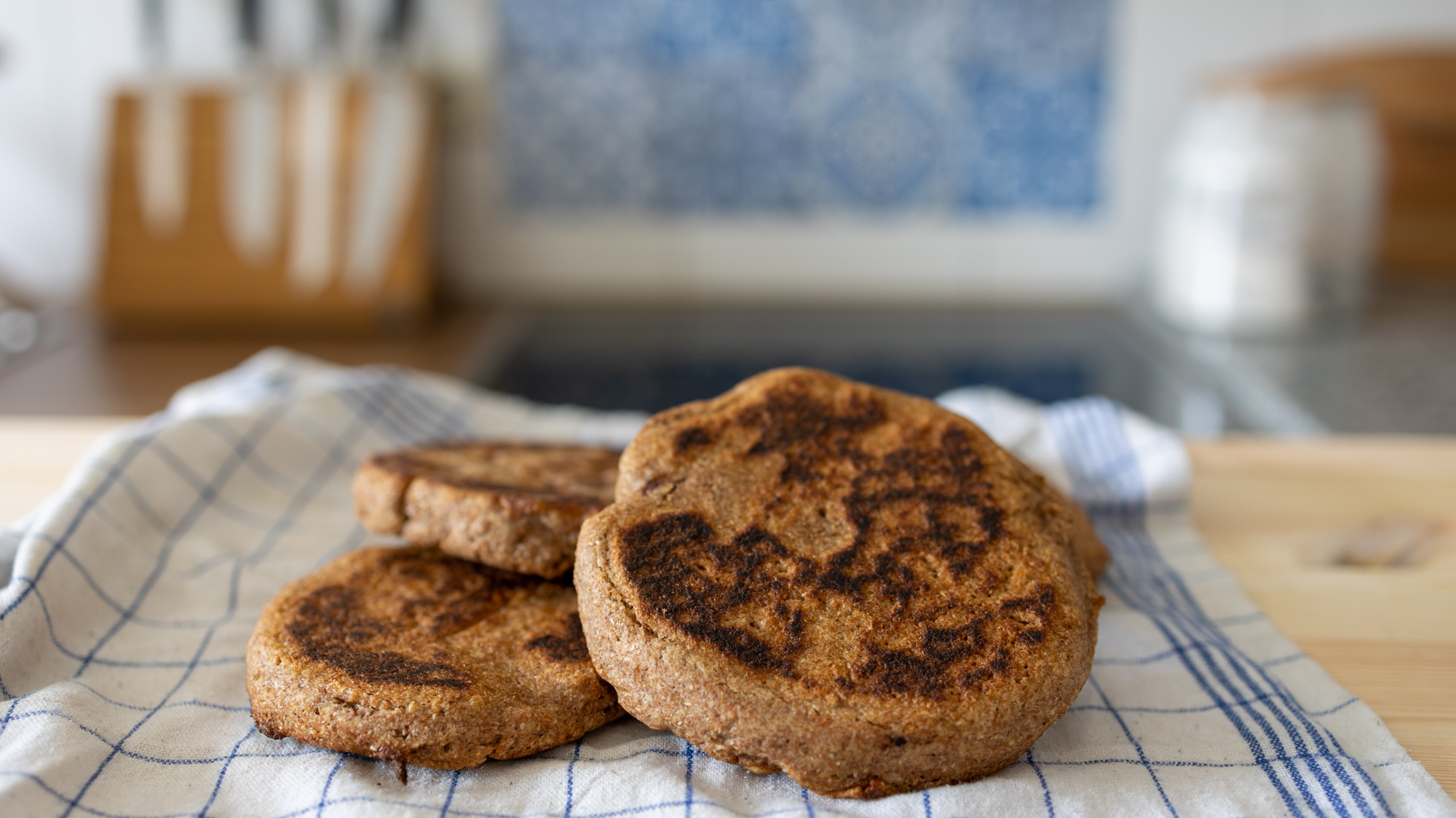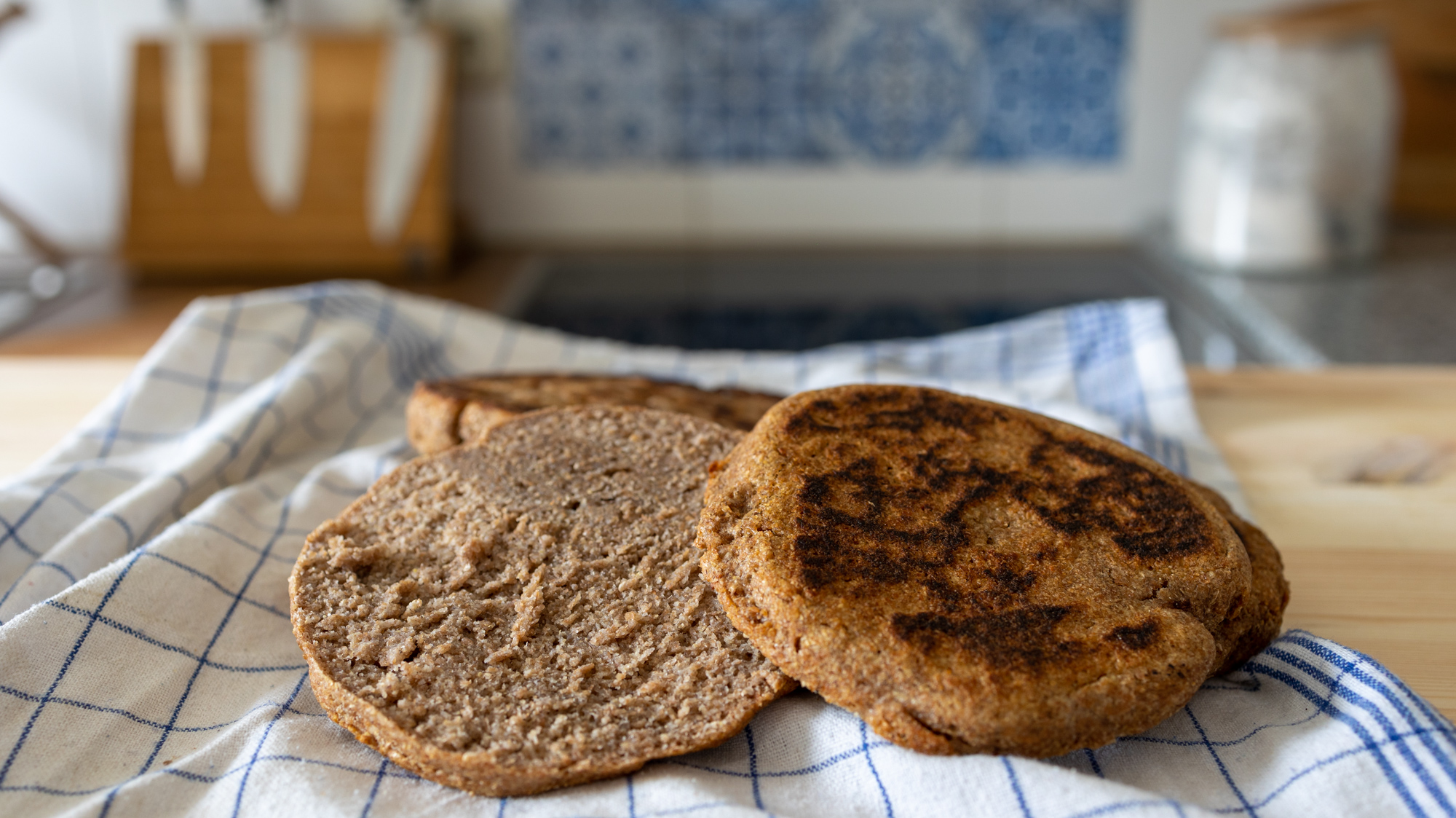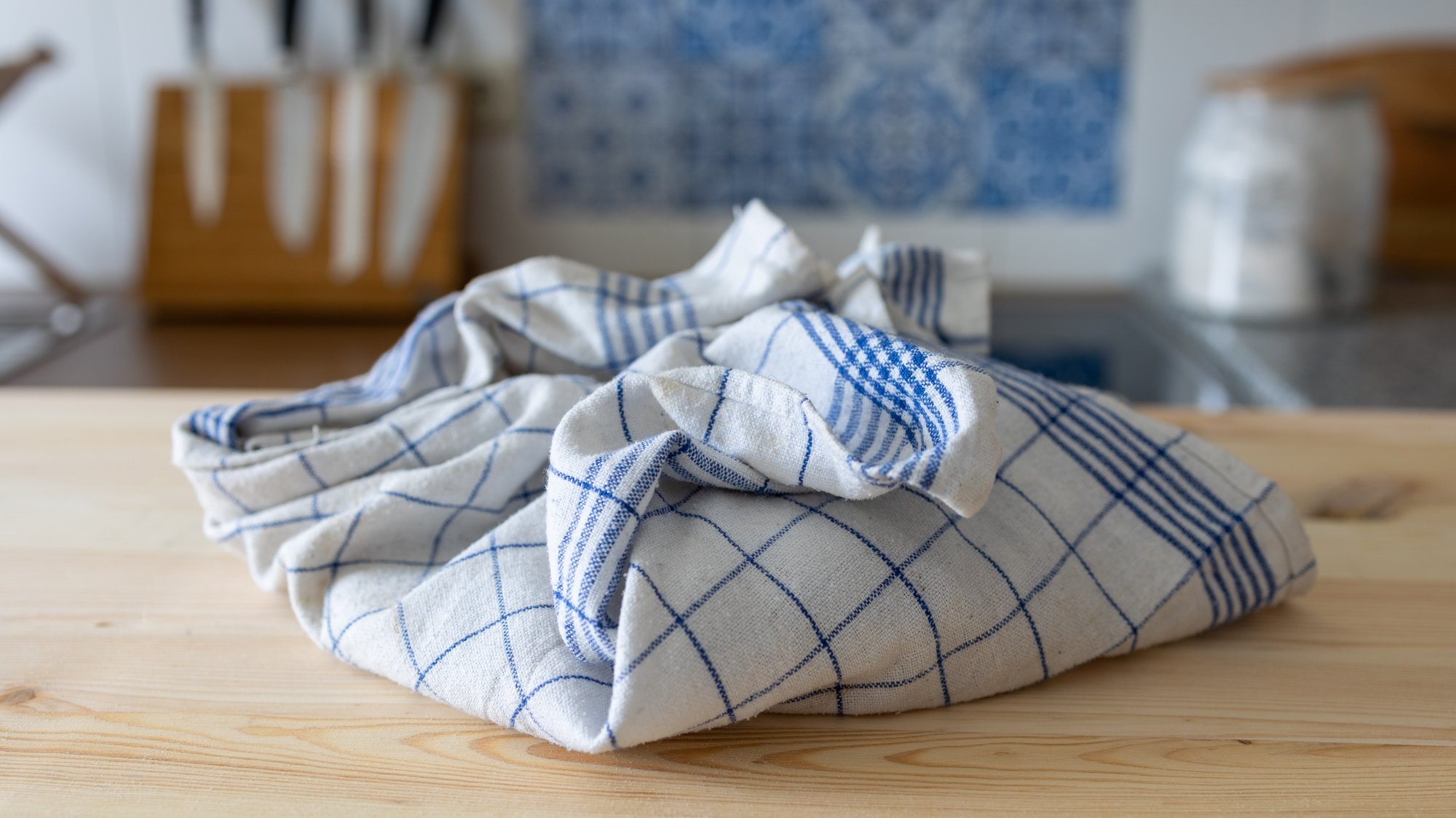Primitive Sourdough Cave Bread (5000 year old recipe)
With this recipe you will make bread just like our ancestors have made it for probably thousands of years. It's a very simple recipe that only requires flour, salt, a bit of oil and a stove. It's primitive but will surprise you with excellent taste.
I derived the idea for this recipe from my interview with Karl aka. the sourdough librarian. He said a very wise thing: “The future of bread is in the past”.
Now sadly with modern bread it feels like we didn’t innovate at all in the last 150 years. We now have commercial yeast that makes fast leavening bread. The secret however is to remove the pace, allow your dough to rest for a very long time. This is because enzymes such as the amylase and protease will start to break down your dough the moment you mix flour and water. This means there is more food for your sourdough and you have a dough that’s already partially broken down. The result is a more delicious and better digestible dough. You could of course speed up things by adding additional enzymes, but then you have other issues. Modern bakeries don’t have the time. That’s why you can hardly find slow fermented bread these days.
Keeping that in mind I wanted to go back in time, trying to imagine which tools our ancestors had. They didn’t have an oven, they only had a stove. How do you make bread on a stove though? I never tried, but I was surprised how delicious the result was.
I call the recipe “Cave Bread”, as some of our ancestors probably lived in caves. I imagine many of our ancestors had a much more relaxed simple life than we now have these days. The term cave is in no way meant as a bad term. I just couldn’t find a better term (yet).
Ingredients
The best flours to use for this recipe are ancient grains. Einkorn is the mother of all grain. Emmer is also a great choice. In my case being German I opted for “Waldstaudenroggen”. A very old rye variation. But don’t worry, more modern rye will also do the job. On purpose I did not use wheat. Wheat is a relatively new variety. It would definitely work though and you could replace it. The bread would be more fluffy. Overall this will yield you 4 cave breads.
I did not fully weigh the ingredients. But in case you want - here’s what you need:
| Ingredient | Weight in grams | Baker's math | Comment |
|---|---|---|---|
| Whole flour (rye, einkorn or emmer) | 500 grams | 100.00% | Wheat works too but would kind of defeat the purpose |
| Water | 400 grams | 80.00% | |
| Sourdough starter | 100 grams | 20.00% | |
| Salt | 10 grams | 2.00% |
Making the dough
Give your sourdough starter one more feeding, or use a bit of the previous dough that you made to start this process. The latter is probably how our ancestors made bread. They didn’t feed their starter in advance they just used a tiny bit of the previous dough to start the next dough.
- Mix all the ingredients together
- Your dough should have sort of a play dough consistency
- There is really no need to knead, just homogenize the ingredients
- Let your dough sit in a covered bowl until it roughly doubled in size
- Done your dough is ready.
I moved the dough to my fridge now because it was getting a bit late, but you can also start to bake your dough. In my case the dough was ready after around 10 hours. If you ferment for even longer, your dough will be more sour. This is a question of taste. The more sour, the longer your dough will also be good. The acidity is a natural food preservant, requiring no artificial additional ingredients.
Baking
Our ancestors likely just had a stove, maybe some sort of a skillet? The definitely had no oven. That’s why we will be making this bread in a pan. And oh boi, prepare yourself for a lot of great flavor.
- Divide your dough into around 4 pieces
- Gently flatten and round the dough up, you can use some oil on your hands to unstick the dough
- Each of the doughs should be around 1cm high now
- Let your dough rest while you heat up your pan
- Heat up your pan to medium heat. Optionally add a bit of oil
- Load your dough into the pan. Rotate it every 2 minutes to make sure it doesn’t get too dark
- After 10 minutes your bread is ready
The baking takes a few tries to make sure the dough is properly cooked. My first version was a bit too undercooked. But then after bumping the total time to 10 minutes the bread became very good.
Overall the baking on the stove allows you to have maximum roasting aroma from the high heat. Every color will yield a unique flavor component. I loved the bread very much and will add this to my list of daily breads.
Storing
Just like with Tortillas I wrapped all the breads in a towel. This way they stay very moist and won’t become crisp. This makes the bread the perfect side for a nice and hearty stew.



